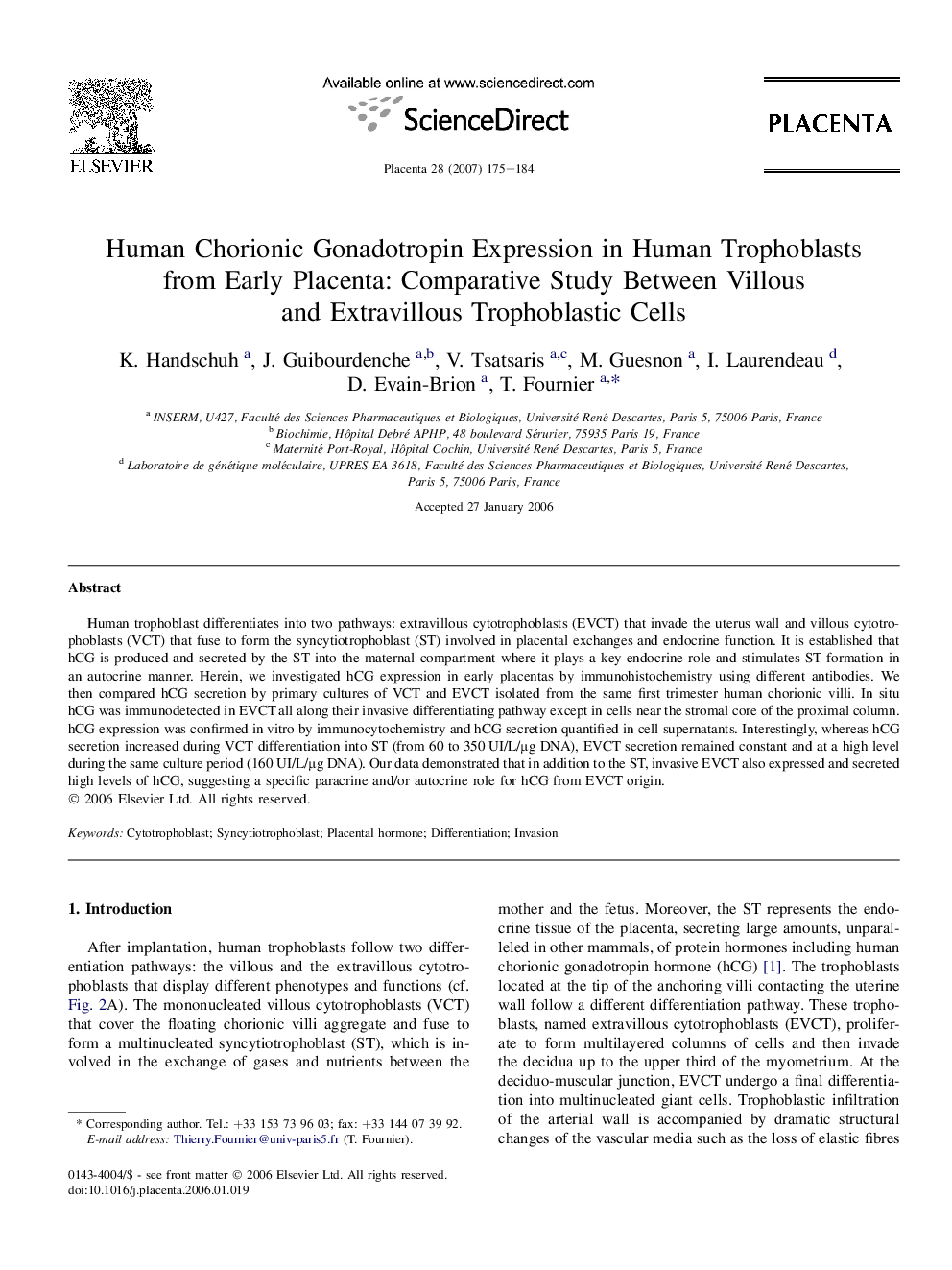| Article ID | Journal | Published Year | Pages | File Type |
|---|---|---|---|---|
| 2789813 | Placenta | 2007 | 10 Pages |
Human trophoblast differentiates into two pathways: extravillous cytotrophoblasts (EVCT) that invade the uterus wall and villous cytotrophoblasts (VCT) that fuse to form the syncytiotrophoblast (ST) involved in placental exchanges and endocrine function. It is established that hCG is produced and secreted by the ST into the maternal compartment where it plays a key endocrine role and stimulates ST formation in an autocrine manner. Herein, we investigated hCG expression in early placentas by immunohistochemistry using different antibodies. We then compared hCG secretion by primary cultures of VCT and EVCT isolated from the same first trimester human chorionic villi. In situ hCG was immunodetected in EVCT all along their invasive differentiating pathway except in cells near the stromal core of the proximal column. hCG expression was confirmed in vitro by immunocytochemistry and hCG secretion quantified in cell supernatants. Interestingly, whereas hCG secretion increased during VCT differentiation into ST (from 60 to 350 UI/L/μg DNA), EVCT secretion remained constant and at a high level during the same culture period (160 UI/L/μg DNA). Our data demonstrated that in addition to the ST, invasive EVCT also expressed and secreted high levels of hCG, suggesting a specific paracrine and/or autocrine role for hCG from EVCT origin.
